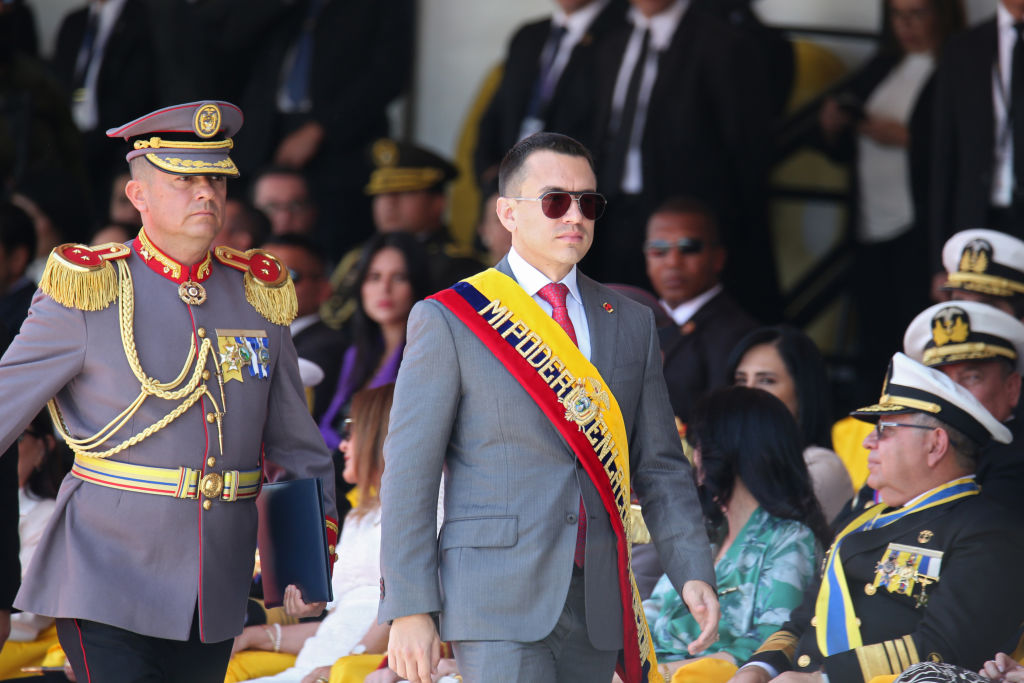Drug Cartels Move Beyond Borders
Drug Cartels Move Beyond Borders
Despite Mexico's war on organized crime, bloodshed continues and the cartels' tentacles reach well beyond the country's borders. As the crisis grows, so do calls and proposals for solutions.
Two years after Mexican President Felipe Calderón declared war on the country’s drug cartels, the bloodletting continues to spread. Despite impressive arrests and narcotics seizures, the murder rate doubled in 2008 over the previous year. Moreover, the gangs’ tentacles reach into the highest levels of government down to local police forces. But the drug war’s impact has also been felt well beyond Mexico, with links extending across the Americas, into Europe, and as far as Australia.
Out of fear of the drug war’s overflow, Guatemala plans to deploy several hundred soldiers along its border with Mexico during the next few weeks. In September, Guatemalan President Álvaro Colom accused the cartels of high-level infiltration after it came to light that his office had been bugged. Analyst Sam Logan at ISN Security Watch describes Guatemala as the “release valve” for the cartels, given its low altitude and proximity to paved roads in Mexico. Logan also points out that, in South America, Peru saw ties develop between Mexican drug cartels and the Maoist Shining Path guerillas. Recent attacks on the Peruvian army in which 15 soldiers and two civilians died were blamed on ex-guerrillas hired by Mexican drug traffickers to “secure their trade routes out of the mountains.” According to a UN report, coca cultivation increased in Peru, Colombia, and Bolivia by 16 percent since 2001.
The connections appear to reach even further south; Argentina has become a drug trade hub, fueling the U.S. methamphetamine and European cocaine demands. Latin American Thought blog’s Eliot Brockner reports on the recent seizure of 1,000 kilos of cocaine at Buenos Aires’ port. The fact that Mexican drug cartels “can use Argentina as an entry (ephedrine/pseudoephedrine) and exit (cocaine) point suggests there is a fairly well-coordinated smuggling ring capable of transporting large quantities of illicit merchandise across South America,” he writes.
The cartels’ links reach beyond the Americas. A Stratfor analysis covers Mexican connections with Italy’s ‘Ndrangheta organized criminal clan, allowing for drugs to be shipped from Colombia through Mexico to the United States and on to Italy. From there, the drugs could be distributed to the European market. Earlier this month, a cocaine bust involving the arrest of three Mexican nationals by Australia’s federal police uncovered that country’s local link to that Mexico’s cartel.
The 2009 National Threat Assessment published by the National Drug Intelligence Center identifies Mexican drug-trafficking organizations as “the greatest organized crime threat to the United States.” With an eye to the problem, the United States released $197 million to Mexico at the beginning of December—the first of a $400 million package to fight organized crime through the Mérida Initiative.
As the crisis grows, so do the calls for solutions. Harvard International Review’s Jason Larkin suggests that, in the absence of decriminalization or results from increased militarization, negotiation with cartels stands as an option, “just as the U.S. has considered negotiating with the Taliban.” In a lengthy article, OpenDemocracy.net writes that “legalization may become the most effective weapon in the arsenal aimed at organized crime…it seems now is the perfect time to give it a try,” after a thorough analysis of the crisis. A Semana op-ed compares the tragedy facing Mexico to the one in Colombia’s recent history. It recommends that Latin American governments come together to coordinate efforts to halt the bloodshed, which could help affect change internationally. A Cox News Service article looks to similar organized crime circles of the past, ranging from Chicago during Prohibition to Italy’s Mafia, and suggests that peace may come through legalization or by fragmentation of the cartels.
El Universal features a multimedia page that tracks the ongoing violence and keeps a complete tally of the war’s victims in Mexico. Read an AS/COA analysis on how gun smuggling from the United States into Mexico fuels the war.







